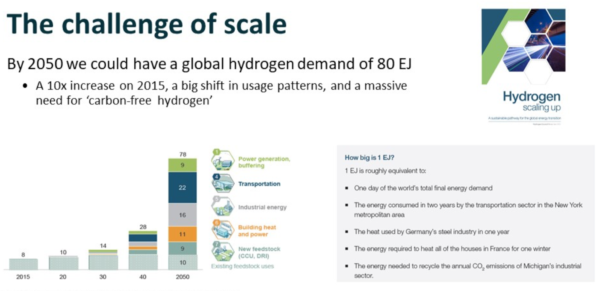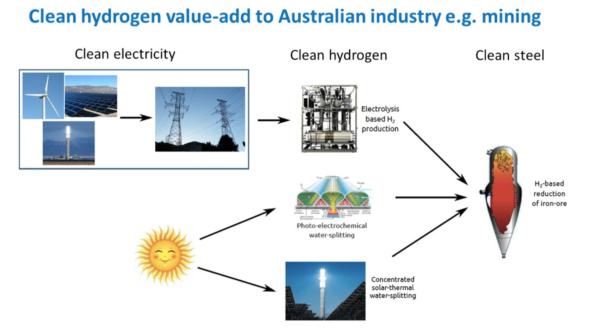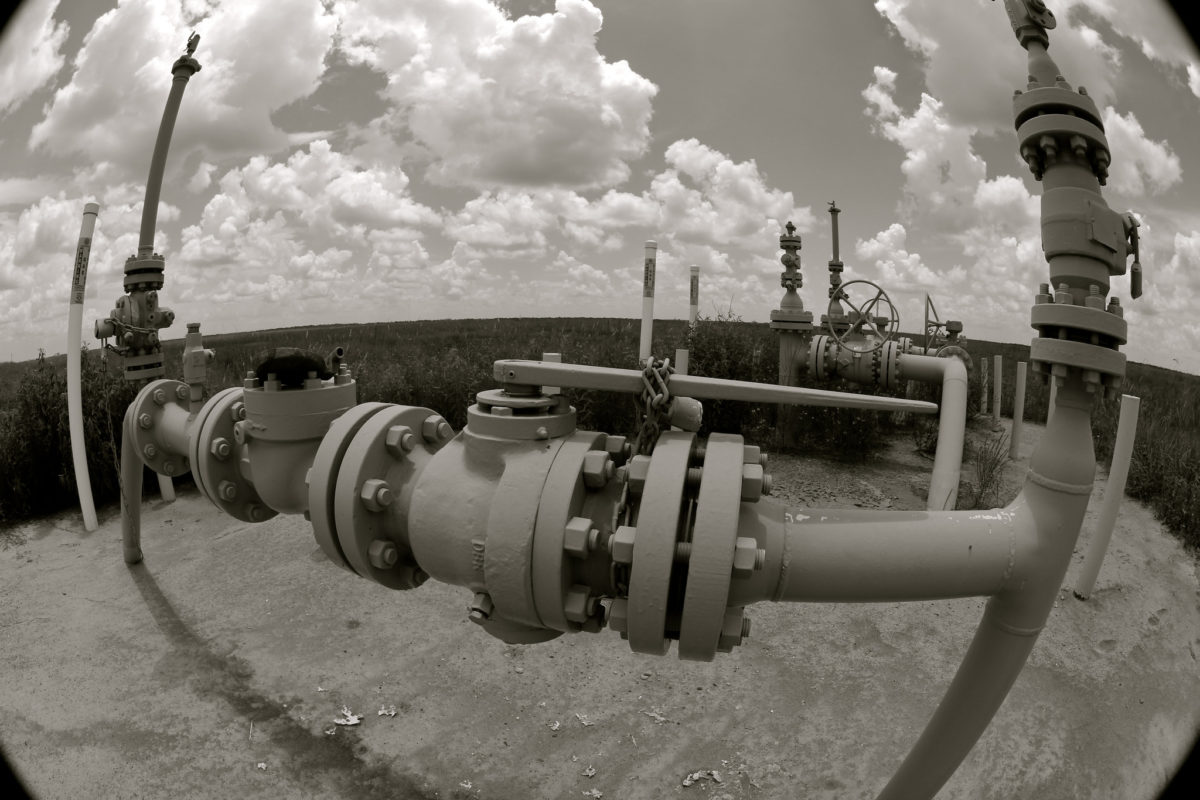From pv magazine Australia.
This weekend, in the mountain resort of Karuizawa in Japan’s Nagano prefecture, G20 energy ministers will be presented with an International Energy Agency (IEA) study on the state of play of clean hydrogen, along with recommendations for immediate practical steps to accelerate the development of hydrogen as the world’s most significant clean energy delivery and storage mechanism. Proponents say hydrogen is capable of decarbonizing major global industrial sectors from electricity supply to transportation, agriculture and steel making.
If that all sounds familiar, even the IEA blog refers to the old joke that “hydrogen is the fuel of the future — and always will be”. But the Australian government, chief scientist Alan Finkel, the Australian Renewable Energy Agency, the Commonwealth Scientific and Industrial Research Organization (CSIRO), Andrew Forrest of Fortescue Metals and numerous research hubs around the nation believe hydrogen’s time is near, for three reasons:
- The imperative importance of decarbonizing human activity is undeniable, and areas with wind and solar resources require an energy export method beyond transmission lines to expand their reach, range of application and reliability;
- Japan and South Korea, countries reliant on energy imports, have established roadmaps to incorporate hydrogen as a major fuel in their economies, along with immediate demand for clean hydrogen in bulk;
- And, “in parallel with that pull,” said Daniel Roberts, leader of the CSIRO hydrogen energy systems future science platform, the cost of “key technology components – in particular fuel cells and electrolyzers – and renewable energy are coming down to a point that is beginning to see them approach or even get to parity with some of the systems they’re seeking to replace”.
Roberts was among a panel of experts convened on Thursday by the Australian Science Media Center to explain the opportunities and challenges of a national hydrogen industry to science writers and reporters, in the interests of correctly informing the Australian public of hydrogen’s potential.

An export to replace coal
Whatever you think of the sense or otherwise of breaking ground on new coal mines in Australia, Ken Baldwin, director of the Energy Change Institute at the Australian National University, said: “The interesting future that we have in front of us is that as the world goes to a carbon neutral economy towards the middle of this century the demand for coal and gas and other fossil fuel exports will eventually decline. What will replace it?”
The use of hydrogen fuel cells to power not only cars but buses, heavy vehicles, trains, materials handling such as forklifts and cranes and shipping is being explored, if not yet widely deployed, worldwide.
Australia’s hydrogen export industry is already a reality says Douglas MacFarlane, leader of the energy program at the Australian Research Council’s Center of Excellence for Electromaterials Science. A brown-coal gasification program in Victoria that produces what’s known as black – i.e. non-renewable – hydrogen is set to help supply Japan’s 2020 Olympic Games energy requirements. And Queensland’s University of Technology last week exported its first green hydrogen, using a concentrated solar PV array developed by Japan’s Sumitomo Electric Industries to convert toluene into transport-safe hydrogen carrier methyl cyclohexane.
That breakthrough represented a potential pathway for overcoming the cost and transport barriers to a full-scale export industry.
What’s keeping the lid on hydrogen?
MacFarlane explained that although the cost of renewable energy – particularly solar – is competitive and declining, the equipment required for catalyzing water into its hydrogen and oxygen component parts is expensive and, as yet, not efficient enough to make the most of the energy required to drive the process.
In addition, he said, low-pressure water-splitting technology can at present only “produce hydrogen in the tens of atmospheres”, for a product suitable for directly mixing hydrogen with existing gas supply, similar to adding ethanol to petrol. According to MacFarlane, “700 atmospheres is the sort of pressure that the hydrogen needs to be for electric vehicle fuel stations”. The R&D task, he said, is to reduce the cost of generating hydrogen at a higher pressure suitable for both refueling and export.
Transportation presents another cost challenge as methods of shipping hydrogen in a liquified form that requires cooling to an extreme degree are very energy intensive. Developing pathways to efficient catalysis of hydrogen into ammonia, said MacFarlane, would allow movement of hydrogen “in shipping and piping technology that is already well established in the ammonia-for-fertilisers industry”.
Popular content
Roberts agreed “ammonia is almost a ready-to-go solution that needs to be transitioned into the energy context”.
Steeling for new exports
One of Australia’s biggest potential applications of hydrogen as stored and readily available renewable energy is in the decarbonization of the energy-intensive process of turning iron ore into steel. Onshore manufacturing of that value-added product of Australia’s mineral industry would provide an export to fill the void left by declining demand for the nation’s coal.

That is part of the vision of the Asian Renewable Energy Hub, the 11 GW generation capacity – 3.5 GW solar, 7.5 GW wind – development proposed for the Pilbara in northern Western Australia, with 8 GW of the capacity earmarked for hydrogen production and 3 GW for energy users in the region.
A feature of hydrogen as a renewable energy storage medium, said Roberts, is the ability of electrolyzers to quickly absorb excess energy. “They can respond very quickly to fluctuations in the grid and store the hydrogen in the peaks and use it up during the troughs,” he said. That means electrolyzers could be used to build bigger, more stable grids based on renewable energy, he added.
Although Australia is unique in its remarkable potential to generate huge amounts of solar energy, Chile and Middle Eastern countries are also preparing to exploit their solar resources for hydrogen production and export.
As part of his panel presentation for the Australian Science Media Center, MacFarlane included a heat map of the world showing Australia as the biggest landmass in the path of the greatest solar intensity. He had superimposed a tiny yellow square to scale which represented 62,500 km – roughly the size of Australia’s four biggest cattle stations – and said: “If you put standard commercial solar cells over that land area you can generate 25 petawatt hours per year of energy, which is the total electricity demand of the whole world – just from that little box.”
Added cost of desalination
His point was that Australia has the renewable energy capacity to build a hydrogen industry and its research efforts are focused on reducing costs and demonstrating the scalability of water-splitting technologies.
“The other thing we must never forget in the Australian context is water supply,” said MacFarlane. At the very large scale, it’s obvious Australia would have to use seawater for hydrogen production, which would mean integrating the process and cost of desalination into the hydrogen production equation.
All three experts believe worldwide carbon pricing is an inevitability and when imposed on fossil fuel sources and fossil-fueled processes will make the price of green hydrogen more attractive. “The price issue hasn’t played out fully yet,” said Baldwin, “the technology is rapidly advancing and government systems around the world are moving towards having a price on carbon eventually.” We’ll have to “see what happens in a carbon-constrained world”, he added.
The IEA says it “will help governments craft the right policies” for hydrogen. Let’s see this weekend.
This content is protected by copyright and may not be reused. If you want to cooperate with us and would like to reuse some of our content, please contact: editors@pv-magazine.com.



Why do you have to desalinate seawater for hydrogen catalysis? IIRC you need minerals in the water for the process to work efficiently.
Good to know that the Australian research establishment is taking ammonia seriously as a hydrogen transport medium. The great advantage is the boiling point, between those of propane and butane, and much, much higher than methane or pure hydrogen. Propane and butane are routinely liquefied at ambient temperatures simply with moderate pressure, and transported by truck – moped at a pinch – in simple steel bottles. The technology is cheap, safe and readily available. That can’t be said of liquid hydrogen.
“MacFarlane explained that …………equipment required for catalyzing water into its hydrogen and oxygen component parts is expensive and, as yet, not efficient enough to make the most of the energy required to drive the process.”
This is nonsense on two legs. With capacity factors above 40% the capital cost of the electrolysers disappears and the main cost is electricity. “Not yet efficient enough” is likewise garbage. Electrolysers need around 55kWh to produce 1kG of H2 @ NTP. The 1kg has an energy value of 40kWh. It is possible that there could be improvements to get the 55 down to 50 . Our own work has shown that, for example SMR H2 – once a carbon levy such as the EU ETS is imposed – costs the same as electrolysed H2.